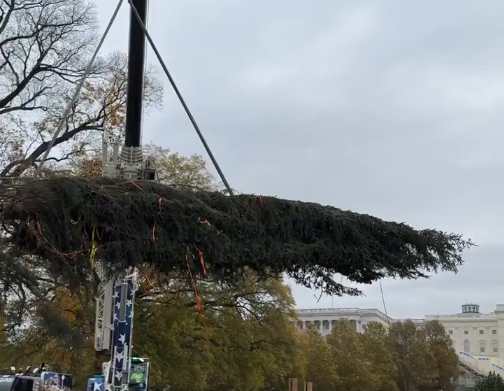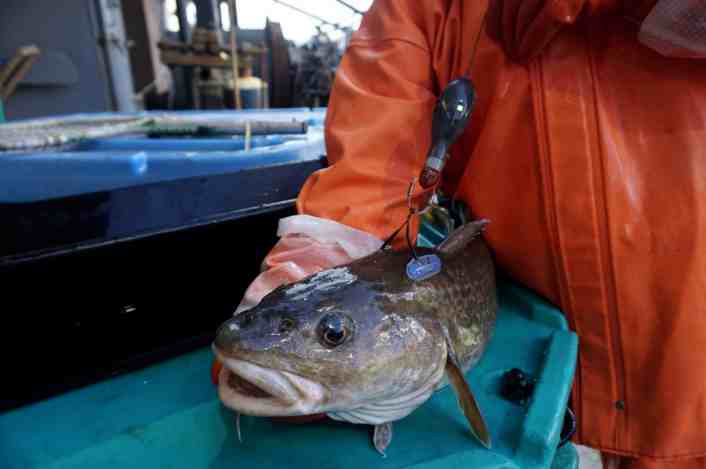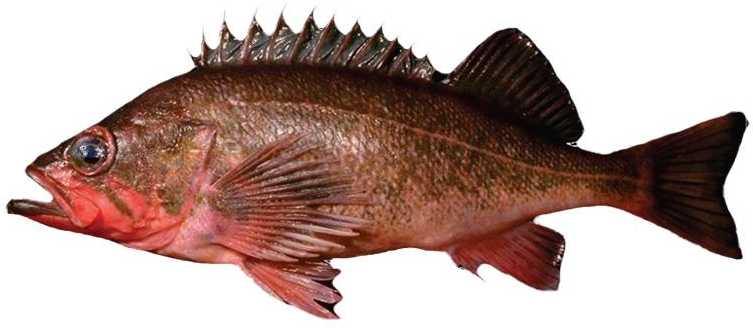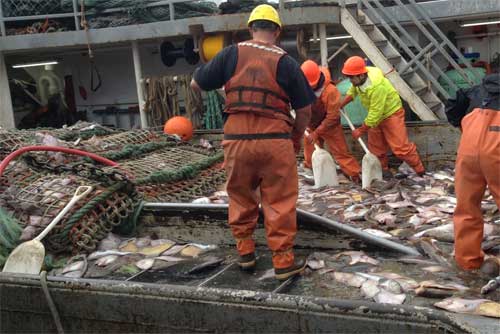The time has arrived when the age of a fish is an important factor in its management and catch status. The accuracy of determining the age of a given species has made a quantum leap in the last decade due to the application of nuclear technology with roots in dating tree rings and rocks to ichthyology – and leaving previous methods of estimating species longevity far behind.
Scientists at NOAA’s Pacific Islands Fisheries Science Center in Honolulu have been working on how to accurately determine the age of a given species of fish by using two measures of radiation decay over time.
The first method, bomb radiocarbon dating, is based on a time-specific event – in this case the atmospheric atomic bomb tests in the Pacific. Bomb radiocarbon dating is a technique that has evolved as a unique application in the age validation of marine fishes and invertebrates.
The second method, lead-radium dating, has been used successfully for nearly 30 species of fish by other investigators and is based on a known radioisotope decay series. It can be used to determine ages for fish ranging from a few years to about 100 years.
The approach relies on a conserved record of the rapid increase in radiocarbon (14C) that occurred in the oceans of the world as a result of atmospheric testing of thermonuclear devices in the 1950’s and 1960’s. It can be used to age fish born during this period, and is currently effective only for fish up to about 53 years old.
Both methods measure the amount of radioisotopes present in the tiny ear bones – otoliths – of the fish. The radioisotopes are stored in the calcium carbonate of the otoliths. The otoliths are micro-milled to expose their core. The lead-radium measurements are performed in Hawaii and the carbon-14 readings are done at the National Ocean Sciences Accelerator Mass Spectrometry Facility (NOSAM) at Woods Hole Oceanographic Institution.
Bomb radiocarbon dating can determine the age of individual fish with high precision (± 1 to 2 years). Lead-radium dating, on the other hand, can be used for fish of any age but detection limits require the pooling of otoliths from many fish to attain measureable lead-radium levels. A group of fish of similar size is used, and the result is an estimate of average age for the group. Where both methods are feasible, using both can provide the most information in an exploratory study.
What allows for the precision of bomb radiocarbon dating is the fact that the radiocarbon signal can be measured over time in reef-building corals because coral stores the ocean signal in annual growth bands of the skeleton. The same is true for fish otoliths, the tiny bones in the ear of the fish. The radiocarbon signal is stored in the otolith calcium carbonate.
This means the measured radiocarbon in the otolith core (birth year) can be correlated to the coral radiocarbon record. The timing must be right because the birth year must be during the rise of radiocarbon from the bomb test period –from1955 to 1970. An example of how this works is if a fish was captured in 1995 and its otolith core radiocarbon matched the coral record from 1965. This fish was 30 years old.
“The coral records are a nice time-specific record of marine chemistry including the radiocarbon signal created by the bomb tests in the 50’s and 60’s,” said Allen H. Andrews, a PhD ichthyologist who works as a Research Fisheries Biologist at the Pacific Islands Fisheries Center of NOAA Fisheries. Andrews is currently working on determining the age, growth, and longevity of marine organisms using naturally occurring and man-made radioactivity. His work crosses numerous disciplines within marine science and directly involves research in ichthyology, radiochemistry, marine ecology, and chemical-physical oceanography.
One of the fish species that Andrews and his colleagues have worked with is the Hawaiian pink snapper, (Pristipomoides filamentosus) known as opakapaka.
“Opakapaka were originally seen as a relatively fast growing species with a maximum estimated age between 5 and 18 years,” said Andrews. “The methods used to come up with these estimates are good for validating the age of young fish, but not as appropriate for the largest fish.
“Most fish can be aged by counting annual growth zones in otoliths, similar to counting rings in a tree,” he said. “But opakapaka otoliths have not revealed growth zones that can be counted for the oldest fish. Therefore, the methods used for early fish growth were used to extrapolate an age for the largest fish. For some fishes this practice may be valid, but with opakapaka the results were unclear.”
Bomb radiocarbon dating of opakapaka revealed they could live more than 40 years. In the study, otoliths from collections revealed ages from 11 to 43 years for lengths of 20 inches to 29 inches. Overall, the age and growth calculated for young fish by other methods remained valid up to about 5-10 years, but the extrapolated maximum ages underestimated true age. This means opakapaka can grow fairly large in less than 10 years, but each fish can reproduce for more than 30 years.
Bomb Radiocarbon dating has been used to determine the longevity other species, sometimes with dramatically unexpected results.
This recently turned out to be the case with the bluespine unicornfish (Naso unicornis), a fish commonly seen by snorkelers in Hawaii and known locally as Kala. This fish may seem like a small to medium-sized reef fish to most people, but it can be a regular part of fish markets reaching a maximum size of up to 27 inches. Its range is considerable as a tropical fish ranging from Hawaii throughout the southern tropical Pacific and Indo-Pacific, and into the Indian Ocean to the eastern coast of Africa.
“One of the challenges with the Kala is with the size of the otoliths from this fish,” said Andrews, who is working with collaborators Ed DeMartini and Jeff Eble on the project, an extension of work started by Eble as a University of Hawaii graduate student.
“They are small, and for me to validate the age I need to extract the core – first year of growth or less – from the otolith and analyze it for radiocarbon,” he said. “This was very difficult and near the limits of what I can extract with the micromill with confidence plus what NOSAMS can measure for radiocarbon with a reasonable level of precision.
“The latest bomb radiocarbon dating confirmed the 50 year estimate of longevity for the species that Jeff Eble made from counting growth zones in otolith sections.”
This kind of information is important for fishery management because proper stock assessments can be made to determine population productivity, and ultimately an estimate of a sustainable yield.
“All of this information on longevity is important in determining fishable levels and the sustainability of a given species fishery,” said Andrews. “It helps us understand the growth cycle of the species, plus when it starts breeding combined with that species’ fecundity. It’s not as straightforward as people might think.”
Read more at Fishermen’s News Online







